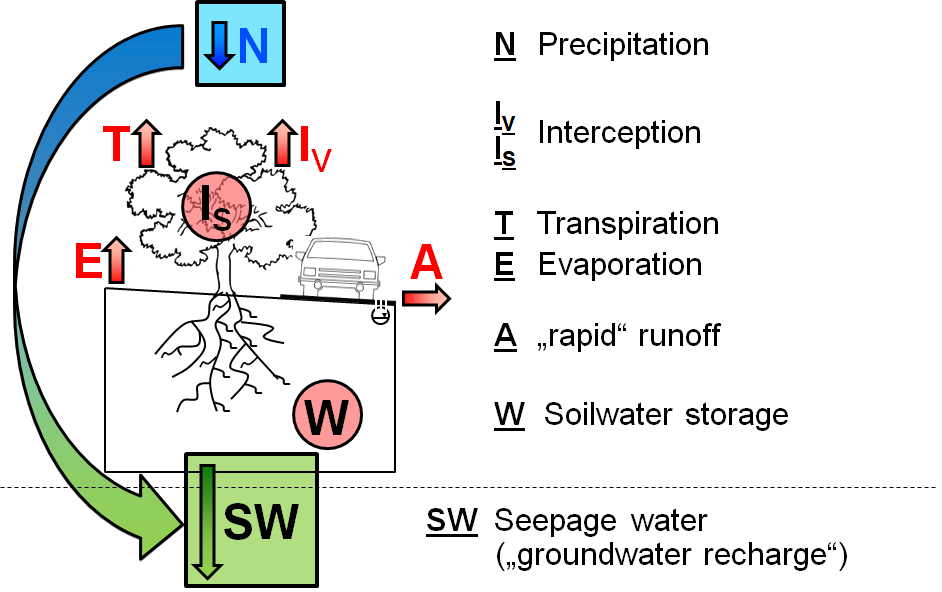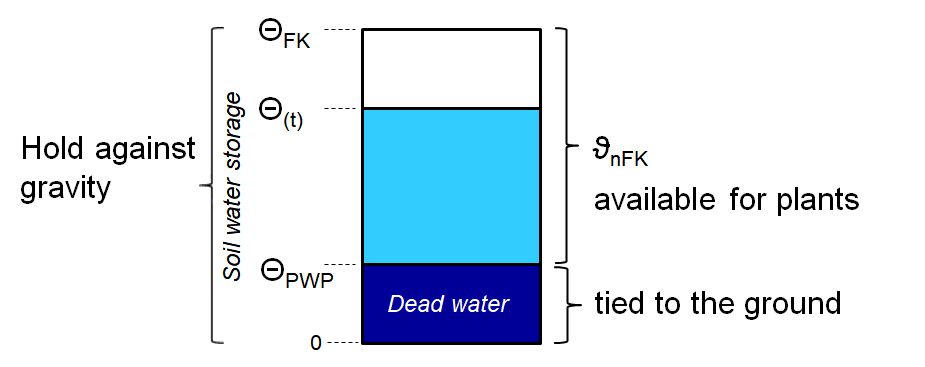As part of the research project " "Development of the groundwater level as a result of climate change on the city of Düsseldorf" (delta h Ingenieurgesellschaft mbH / Institute for Applied Physical Geography RUB, 2014), a method for determining transient area-differentiated groundwater recharge rates was developed, which is based on a soil water balance model (see "Zepp, H., König, C., Kranl, J. et al.: "Implicit calculation of groundwater recharge (RUBINFLUX) in the transient groundwater flow model SPRING. A new methodology for regional, spatially high-resolution applications". Groundwater (2017) 22: 113.https://doi.org/10.1007/s00767- 017-0354-3"). The method is integrated into SPRING under the RUBINFLUX menu item.
The following figure shows the relevant balance components for determining the daily amount of seepage water as a function of the amount of precipitation, which is recognised as "groundwater recharge" in the groundwater model.

Balance parameters for determining groundwater recharge
Transpiration, interception and evaporation are the components of actual ("current") evaporation. They are limited by physical (e.g. heat radiation), astronomical (e.g. position of the sun) and climatic (e.g. current temperature) constraints as well as site-related restrictions (e.g. utilisation, vegetation, soil).
"Rapid" runoff components are determined by the factors slope, land use, soil class and moisture (ASCS1 component) as well as the degree of stabilisation or sealing at the location under consideration (AVERS component). The precipitation rate N is reduced by the proportion of rapid runoff from soil-dependent parameters and slope (ASCS) if the attribute GGRD is assigned.
Soil water storage: Its size is made up of the proportions of the (usable) field capacity and the permanent wilting point of the soil.

Water content in the soil water reservoir
1 according to Soil Conservation Service (U.S. Department of Agriculture), modified according to WILLIAMS
 Input data in the model file
Input data in the model file